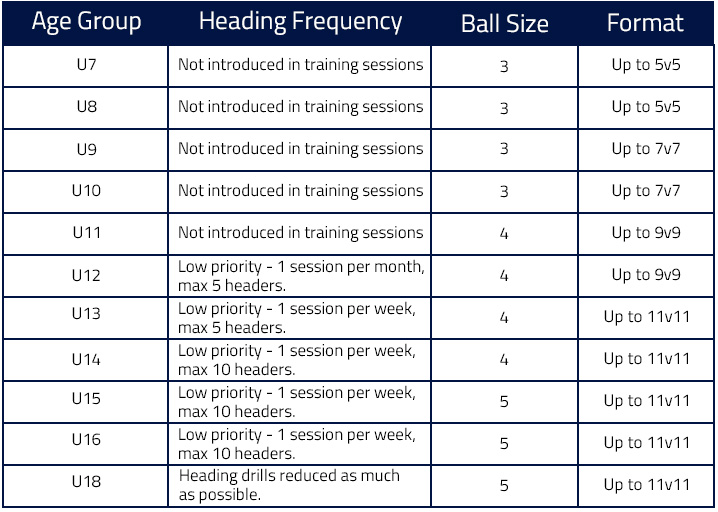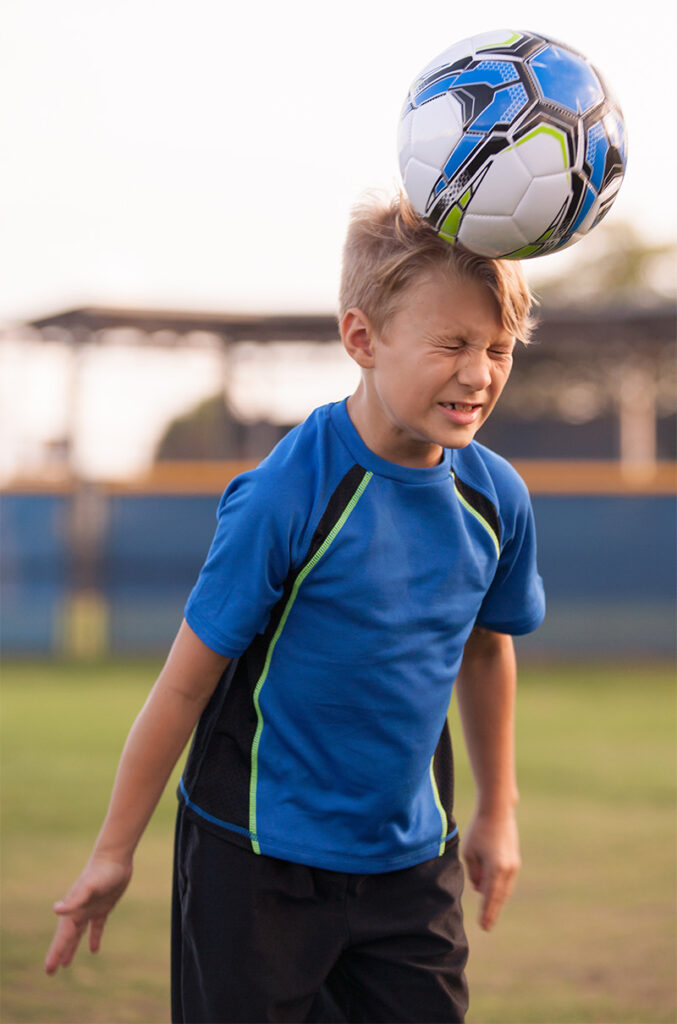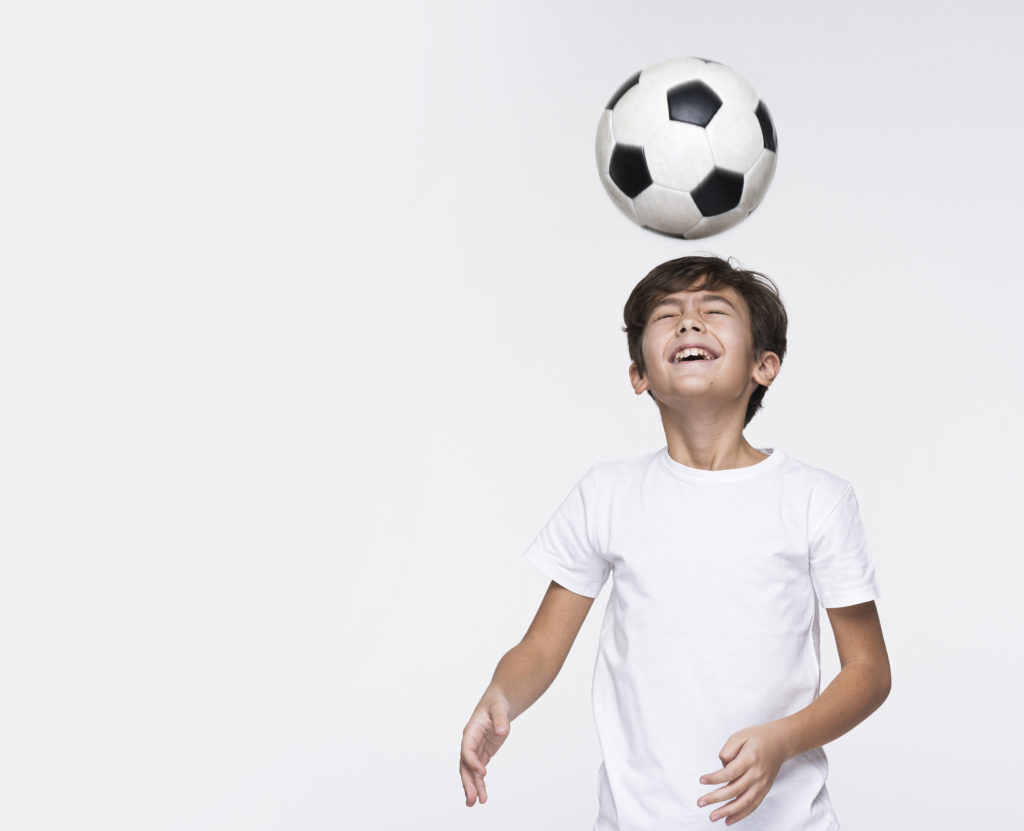Last Updated on: 11th October 2024, 02:51 pm
Heading In Youth Football
Updated Guidance For Youth Football Training and Matches
There has been a lot of talk about the use of heading in youth football in recent years and a lot of things have changed. The Scottish FA took the first steps by announcing it would ban children from heading footballs in training sessions. In 2020, the other FAs introduced their own updated guidance but what prompted these changes?
Why has it changed?
The updated guidelines come after research into the link between dementia and football. The FA and PFA funded FIELD study discovered that former footballers were more likely to die of dementia. The study could not say what caused the increased risk but it caused concern about the future health of all players.
The new guidance has come from an independently-chaired research taskforce to help minimise the potential risk. The Scottish and Irish Football Associations will also adopt the new guidance. The FA assured everyone that the research has not uncovered a definite link between heading the ball and dementia. Instead, the new guidelines aim to reduce any potential risk by limiting the number of times a young player can head the ball.
The USA ban
In 2015, the American Soccer Federation banned children aged 10 and under from heading the ball. This came about after a group of worried parents and players filed a lawsuit against the US Soccer Federation. For many, the decision made America a pioneer in the sport but others just saw them buckling under the threat of legal action. The decision also raised many questions about how effective the ban would be and how it would impact young players. Especially as young football fans are so likely to try and emulate their sporting heroes.
Updated Heading Guidance 2020
The English, Irish and Scottish FAs jointly offered new recommendations for clubs, coaches and players about the practice of heading in training sessions. The new guidelines aimed to reduce any potential risk by limiting the number of times a young player can head footballs.
The update includes:
- Heading guidance in training for all age groups between under 6 and under 18
- No heading in training during the foundation phase (primary school children)
- A graduated approach for children in the development phase (under-12 to under-16)
- Required ball sizes for training and matches for each age group
The new guidelines that the FA has released include detailed requirements for each age range as well as recommendations for the focus of training sessions. The full list can be found on the FA’s website but the table below shows the major changes concerning heading the ball.

2022/23 Trial
During the 2022-23 season, the FA carried out a trial to remove deliberate heading in football matches across U12 level and below. They gained approval from the International Football Association Board [IFAB] for a standard two-year trial basis.
Why reduce heading in matches?
The FA wanted to introduce the trial for a number of reasons. They were aiming to protect against any potential risks that could be linked with heading the ball. This includes injuries from head-to-head, head-to-elbow, or head-to-ground contact. They want to take precautions at the U12 and below levels of the game while research is still ongoing about the risks.
The removal of deliberate heading would also bring matches in line with their current guidance on heading in training sessions. Removing heading for these age groups would mean the focus would be on developing skills with their feet.
2023/24 season
The FA confirmed that their trial would continue for its second year during the 2023-4 season. They communicated with the County FA network, leagues, clubs and schools to let them know how they can get involved. The continued feedback and research would go on to help the FA improve youth football in the future.
Heading Updates For The 2024/24 Season
After two seasons of the IFAB trial, the FA announced their decision to phase out deliberate heading in matches in all affiliated grassroots youth football between U7-U11 levels. This will take place over the next 3 seasons and will include all leagues, clubs and any affiliated school football matches. It will start with U7-U9 from the 2024-25 season and then increase to include U10 from 2025-26. Finally, they will include the U11 level from 2026-7.
The FA consulted and discussed the new rules with representatives across the grassroots game. This includes the National Game Board, the FA Development Committee and the wider County FA network. The FA Board and FA Shareholders also approved the changes.
Why Add The New Rules?
The whole aim of the IFAB trial and the changes was to help positively shape youth football. The removal of deliberate heading in matches will ensure they align with the current heading guidance for training. It will help reduce the potential risk factors associated with heading and place more focus on the feet. Coaches should introduce players to heading the ball at the U12 level as players move from primary to secondary school.
Throughout the next 3 seasons, the FA will continue to research, review and analyse the implementation of the new rules. This will help them identify possible ways to improve the experience for players and referees.
2024-25 Heading Rules
From the start of the 2024-25 season, the following rules will be rolled out for U7-U9 teams.
Deliberate Header Restart
- Deliberately heading the ball is an offence punishable by an indirect free kick.
- The indirect free kick is taken at the point where the ball was deliberately headed, except:
- Where a player deliberately heads the ball within their own penalty, the referee will stop the game and restart with an indirect free kick to the opposition from the nearest side line of the penalty area where the offence took place.
Touchline Restart
- When the whole of the ball passes over the whole of the touchline, on the ground or in the air, instead of a throw-in, a pass-in/dribble-in is awarded.
- The kicker that takes the pass-in/dribble-in may touch the ball again before it’s touched by another player.
- At the moment of delivering the ball:
- The ball must be stationary on the touchline at the point where it left the pitch; only the kicker may be off the pitch.
- All opponents must stand at least 5 yards from the point on the touchline where the pass-in/dribble-in is to be taken from.
- A goal cannot be scored directly from a pass-in.
- The ball is in play when it’s kicked and clearly moves.
Sanctions in the event of a deliberate header in a match
- Disciplinary sanctions won’t be applied for a deliberate header in a match, unless the action is considered a persistent deliberate offence, which could then result in a caution.
For more information about the updated rules for heading in youth football, head over the FA website now.


